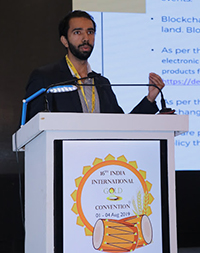Navigate
Article List
- Editorial
By Albert Cheng, CEO, SBMA
- Hong Kong & China Q1 Market Update
By Jeremy East, Senior Representative for the Asia Region, London Bullion Market Association
- Gold in the Time of Coronavirus
By Nikos Kavalis, Founding Partner, Metals Focus
- Covid-19: Potential Impacts on China’s Economy and Gold Market
By Ray Jia, Research Manager, World Gold Council
- Protecting Your Portfolio Against Covid-19
By Joshua Rotbart, Founder and Managing Partner, J. Rotbart & Co.
- Covid-19’s Impact on Singapore’s Physical Retail Gold Market
By Loh Mun Chun, Director, GoldSilver Central
- A Snapshot of the Indian Gold Market Amid Covid-19
By Prithviraj Kothari, National President, India Bullion and Jewellers Association
- Gold: The Collateral of Last Resort
By Emil Kalinowski, Manager, Metals Market Research, Wheaton Precious Metals International
- Why Investors Should Always Hold a Position in Gold
By Nicolas Mathier, Founder, Global Precious Metals
- Bringing About Traceability to the Gold Industry
By Abhinav Ramesh, Director, Chainflux
- SBMA News
By Albert Cheng, CEO, SBMA
Article List
- Editorial
By Albert Cheng, CEO, SBMA
- Hong Kong & China Q1 Market Update
By Jeremy East, Senior Representative for the Asia Region, London Bullion Market Association
- Gold in the Time of Coronavirus
By Nikos Kavalis, Founding Partner, Metals Focus
- Covid-19: Potential Impacts on China’s Economy and Gold Market
By Ray Jia, Research Manager, World Gold Council
- Protecting Your Portfolio Against Covid-19
By Joshua Rotbart, Founder and Managing Partner, J. Rotbart & Co.
- Covid-19’s Impact on Singapore’s Physical Retail Gold Market
By Loh Mun Chun, Director, GoldSilver Central
- A Snapshot of the Indian Gold Market Amid Covid-19
By Prithviraj Kothari, National President, India Bullion and Jewellers Association
- Gold: The Collateral of Last Resort
By Emil Kalinowski, Manager, Metals Market Research, Wheaton Precious Metals International
- Why Investors Should Always Hold a Position in Gold
By Nicolas Mathier, Founder, Global Precious Metals
- Bringing About Traceability to the Gold Industry
By Abhinav Ramesh, Director, Chainflux
- SBMA News
By Albert Cheng, CEO, SBMA
Bringing About Traceability to the Gold Industry
By Abhinav Ramesh, Director, Chainflux
Published on March 20, 2020


ABHINAV RAMESH is an entrepreneur in the fintech and blockchain space. He is a former management consultant and research fellow in neuroscience. He runs WandX solutions, a blockchain products company out of Bangalore, India. Wandx solutions has partnered with the Indian Gold Policy Centre and the World Gold Council for the blockchain platform Shine, which aims to bring about traceability within the gold supply chain, initially in India, then the world over. Abhinav enjoys sports, and is an ironman finisher.
The gold industry is, in general, a late adopter of innovation. Despite the technological advances and best practices the industry has embraced in recent years, the gold industry globally remains loosely organised, dispersed, and an OTC-based market. From the mine, gold follows a sketchy path to reach the end consumer.
Artisanal, or small-scale, mining is still rife with exploitation due to poor safety conditions, unfair wages and the use of child labor. Aggregators from the mines have a large say in price determination for dore. When the product is shipped to the customer, it is sometimes mixed with dore from unknown sources. Regulators are becoming wary of this and are looking to implement more stringent sourcing guidelines and to increase transparency in the procurement of dore. In many cases, gold production and trade are known to contribute towards perpetuating illegal activities like gold smuggling and financing of illicit activities. This stems from the fact that gold is highly fungible and cannot reliably be traced to its last owner. In markets where the gold industry is relatively well-organised, it is a fact that despite following more or less “set in stone” technology-supported supply chain practices, gold passes through a succession of middlemen and undergoes transformation multiple times without satisfactory documentation. As a result, refiners, bullion producers and jewellers cannot effectively support and uphold responsible sourcing practices since there is no reliable basis for ascertaining the origins of the gold they hold.
To address the gold sector’s severe traceability shortcomings, there is an increasing interest in embracing blockchain technology to guarantee the provenance of gold, from its source to the point of sale.
GOLD’S JOURNEY FROM MINE TO CONSUMER

FROM MINE TO CONSUMER: TRACKING GOLD USING BLOCKCHAIN
Blockchain is a technology popularly associated with cryptocurrencies like bitcoin. However, it is also the technology that provides a foundational database for all supply chains – from food to retail, and now precious metals. Blockchain is essentially a shared database on which any kind of information – for example, transactions, ownership records and certifications – can be stored. All information submitted to a blockchain is consolidated into “blocks” of data that are “chained” together using sophisticated cryptography, a log of it shared with every node connected to the network. This is what makes it impossible for someone to edit, delete, or modify data submitted to a blockchain.
The decentralised and secure nature of blockchain technology makes it ideal for the gold industry. In addition to data storage, self-executing programs or “smart contracts” can be written on the blockchain to automatically initiate transactions and transfer the ownership of goods and services without relying on any paper documentation. This greatly reduces the time it takes to take an item (say, gold) from one entity and move it to another in a fully transparent and compliant way.
Blockchain, in this way, effectively addresses trust, or rather the lack of it, between two or more transacting parties. It helps paint a clear picture of the path a transaction (i.e. the transfer of gold from one entity to another) has followed by capturing relevant information each point of transaction, transformation, and transfer, thereby establishing an unbroken chain of custody.
Because of this, blockchain can be sufficiently trusted to transmit data downstream and upstream during an item’s movement across a supply chain.
Specifically for gold, blockchain can be used to not only underpin, but also promote, standards like the Good Delivery Standards established by the London Bullion Market Association (LBMA). Among others, blockchain-enabled, internet-available platforms can be used to bring together and incentivise the many disparate stakeholders on the gold supply chain – from miners and refiners to logistics providers, bullion brokers and jewellers – to share and record information with everyone participating in the network. This way, at every step of gold’s journey on the supply chain, relevant parties would be able to ascertain whether the information by entities before them is sufficiently reliable before deciding to take consignments forward. Pressure from end consumers is already forcing gold jewellers and bullion dealers to aggressively seek provenance information from the source. This can further be leveraged to bring gold industry players on board such a platform to help improve gold’s traceability. In the long run, by storing and producing near-perfect data, blockchain-based traceability will also make it increasingly difficult for unverified gold to enter circulation, which will help curb illegal activities.
BLOCKCHAIN CAN BE SUFFICIENTLY TRUSTED TO TRANSMIT DATA DOWNSTREAM AND UPSTREAM DURING AN ITEM’S MOVEMENT ACROSS A SUPPLY CHAIN
BRINGING ABOUT THE TRANSFORMATION
What blockchain promises is a transformational change in the way gold is sourced and sold. While these are still early days of the technology, there’s merit in encouraging the exploration and development of proofs-of-concept focused on increasing trust and transparency in the gold industry.
There’s already a growing interest among leading gold importing and exporting nations, including India, to build solutions that not only transmit data downstream but also upstream (i.e., from end consumer to jewellers and then on to refiners) on blockchain. The need is not just for an end-to-end system, but a circular one wherein gold can be tracked from the moment it is mined to when it is processed, bought and resold on the open market. This will ensure responsible gold buying and selling practices.
One such example is Chainflux’s Shine platform, which acts as the SWIFT equivalent for the gold industry and is built on a private blockchain consortium network. It is a closed network where gold can be exchanged, traded, refined, and converted to jewellery. Shine provides seamless and fast transactions, and has privacy layers to hide information such as price, network access and node access configurations, and incentive mechanisms for all parties to participate in the network. Shine is being piloted with one of the largest exchanges in the world, and is working with the World Gold Council and the Indian Gold Policy Centre to pilot it within the Indian gold ecosystem.

ABHINAV RAMESH is an entrepreneur in the fintech and blockchain space. He is a former management consultant and research fellow in neuroscience. He runs WandX solutions, a blockchain products company out of Bangalore, India. Wandx solutions has partnered with the Indian Gold Policy Centre and the World Gold Council for the blockchain platform Shine, which aims to bring about traceability within the gold supply chain, initially in India, then the world over. Abhinav enjoys sports, and is an ironman finisher.























